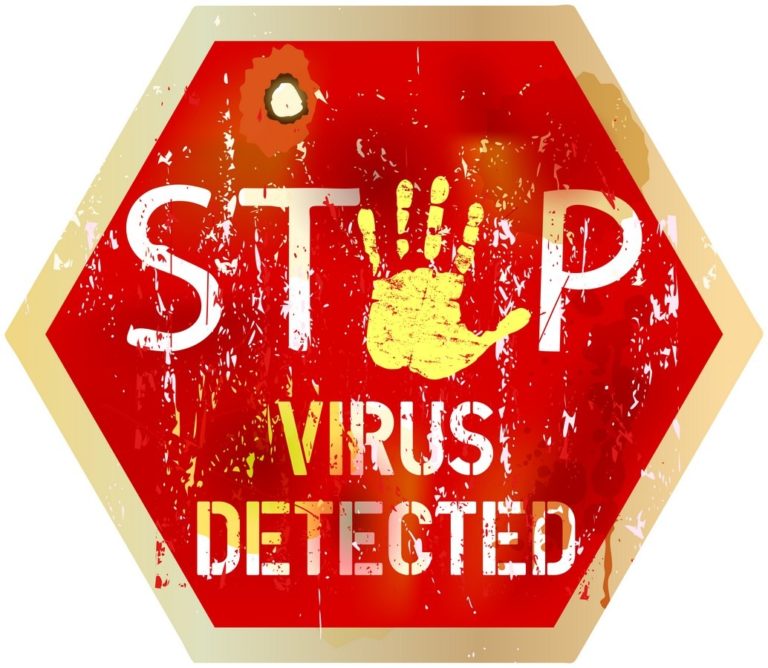Mailsafe, our anti-virus and anti-malware solution for your organization
Our Mailsafe solution blocks all known and unknown malware and viruses.

The most advanced malware has the ability to adapt to the environment it identifies, enabling it to remain inactive, modify its code and even metamorphose into new forms. Polymorphic malware is a sophisticated type of malware capable of modifying its code and characteristics with each infection. Unlike traditional malware, which uses static malicious code, polymorphic malware uses transformation techniques to metamorphose itself and avoid detection by security software. This makes them particularly dangerous and difficult to detect.
When polymorphic malware infects a computer system, it modifies itself by creating variants with different signatures and fingerprints. Each copy of the malware can thus have a different appearance, making it more difficult for traditional antivirus software to recognize and detect them. These transformations are carried out automatically by the malware each time it propagates or is executed.
Malware, such as ransomware, is the most costly category of cyberattack for businesses, as the consequences can be far-reaching.
How does our virus and malware protection solution, Mailsafe, work?
La solution anti-malware de Mailsafe permet de bloquer tous les logiciels malveillants de type virus et malwares connus ou inconnus. Notre solution détecte les malwares polymorphes les plus sophistiqués. Notre solution constitue un filtre anti-virus et anti malware externalisé (dans le cloud) qui ne requiert aucune installation, administration ou maintenance, donc aucun investissement humain.
Notre solution de protection contre les malwares va au-delà de la simple détection traditionnelle. Elle adopte une approche heuristique qui analyse à la fois les comportements et le code, permettant de repérer les anomalies et les comportements suspects que les filtres traditionnels ne sont pas en mesure de détecter.
Pour lutter contre les malwares polymorphes, notre solution Mailsafe utilise des techniques avancées, telles que l’analyse comportementale heuristique, les listes blanches et noires, et d’autres méthodes de détection avancées qui ne se basent pas uniquement sur les signatures. Cela permet de détecter les comportements malveillants des malwares et techniques d’obfuscation dans les emails, même s’ils se présentent sous différentes formes en raison de leur polymorphisme.
Mailsafe est une solution novatrice pensée dès sa conception de manière à réduire au maximum le taux de faux-positifs. Sa force réside dans la combinaison judicieuse des techniques les plus récentes en matière de détection de spams, de virus connus et inconnus, et dans l’analyse des messages pendant la transaction SMTP.

Mailsafe utilise un procédé extrêmement perfectionné de notation des emails s’appuyant sur de multiples techniques d’analyse. Cette analyse est réalisée au fur et à mesure que les messages parviennent aux serveurs ALTOSPAM, ce qui permet d’avoir une action appropriée en fonction du résultat de l’analyse. Suivant la notation du message, ce dernier sera : accepté, refusé temporairement (technique de greylisting), bloqué en quarantaine (libérable sur validation) ou rejeté avec maintien de session (Teergrubing).
L’interface d’administration en ligne vous permet de visualiser rapidement et simplement vos statistiques (messages acceptés, refusés temporairement ou rejetés), les motifs de l’acceptation ou du rejet des messages, vos logs avec les traitements appliqués aux emails, vos adresses les plus spammées. De plus, vous pouvez configurer l’envoi quotidien d’une synthèse des messages rejetés la veille. Ce module vous permet également d’activer l’option anti-pub afin de supprimer la publicité pour l’ensemble ou certains de vos utilisateurs.
How our Mailsafe anti-malware and anti-virus solution works
Heuristic behavioral analysis
Mailsafe analyzes emails and attachments using thousands of rules created by Altospam’s team of experts. New rules are created and updated daily to adapt our filtering solution to new threats.
Real-time attachment analysis
Mailsafe analyzes all attachments (Word, Excel, PowerPoint), as well as PDF and ZIP files, files and macros.
Machine Learning
Our malware and virus protection solution scans emails and attachments in real time, without delaying email delivery.
Mailsafe analyzes emails and attachments to identify suspicious behavior frequently found in malware and ransomware attacks.
Instant analysis with quarantine in case of doubt
Mailsafe analyzes emails and attachments to identify suspicious behavior frequently found in malware and ransomware attacks. Real-time analysis of content & links/Urls: morphological and semantic (keywords, turns of phrase, writing style, sense of urgency)
Mailsafe also includes:
Anti-phishing
Our machine learning algorithms perform behavioral, contextual and visual analyses of emails and urls to identify phishing attacks.
Anti-ransomware
Our algorithms and heuristic analyses examine both behavior and code to detect malware and ransomware lurking in emails, attachments and hosted files.
Anti-spear phishing
Our anomaly detection and semantic analysis algorithms detect spoofing attempts and malicious patterns in phishing emails.
Anti-spam
Our solution blocks spam before it reaches your mail server, and before it reaches your employees’ mailboxes. Mailsafe fights false positives and ensures a near-zero false-positive rate.
E-mail is the main vector of a cyber attack
New and increasingly sophisticated attacks are launched around the world every day. Our solution detects and neutralizes phishing, spear-phishing, malware, viruses, ransomware and spam threats in real time.

Free trial
Free 15-day analysis: test our email protection solutions to discover intrusion attempts in your mailboxes.

Book a demo
Our email protection solution can help you prevent threats from phishing, ransomware, spear phishing, malware, spam and viruses. Book a time with a cyber expert for a personalized demonstration.

Request a quote
Our rates are tailored to your business and your size. Ask us for a customized quote based on your company’s needs.
Why install an anti-virus & anti-malware solution?
-
What is malware and how does it work?
Malware is a computer program designed to cause damage, compromise security or collect information without the user’s consent. It can take various forms, such as viruses, worms, Trojans, ransomware, etc. Malware can infect a system by exploiting vulnerabilities, be installed using social engineering techniques, or be downloaded from untrusted sources. Once installed, the malware executes malicious actions, such as deleting files, stealing information, taking control of the system, etc.
-
What's the difference between malware and viruses?
The main difference between malware and viruses lies in their scope and operation:
- Malware: The term “malware” is shorthand for “malicious software”. It is a general term used to designate any type of software designed for malicious purposes. Malware encompasses various forms of harmful programs such as viruses, worms, Trojans, ransomware, spyware, adware and so on. Their aim is often to cause damage, steal sensitive information, disrupt system operation or exploit users for malicious purposes.
- Virus: A virus is a specific type of malware. It is a computer program that infects other executable files or boot sectors in order to spread and cause damage. Viruses duplicate themselves by inserting their malicious code into existing files, enabling them to spread when these infected files are executed. Viruses can cause damage by altering, destroying or rendering inoperable files and systems.
In short, all viruses are malware, but not all malware is a virus. Malware is a generic term that encompasses different types of malicious software, while viruses are a specific subset of malware that spread by infecting other executable files.
-
What types of malware are there?
Here are a few types of malware:
- Viruses: infect other files and spread when infected files are run.
- Worms: Reproduce and spread automatically across computer networks.
- Trojan horses: masquerade as legitimate software to deceive users and carry out malicious actions.
- Ransomware: encrypts user files and demands a ransom to decrypt them.
- Spyware: Collects information about users without their consent.
- Adware: Displays unwanted advertisements on the infected system.
- Botnets: Infect computers to control them remotely and use them in coordinated attacks.
-
What are the consequences of malware infection?
The consequences of a malware infection can be :
- Loss and theft of sensitive data.
- System and business slowdown or malfunction.
- Theft of personal and financial information.
- Damage to brand image and reputation
- Loss of productivity due to interruptions and technical problems.
- Financial losses for your company
-
How does malware spread via e-mail?
Malware can be spread by e-mail in several ways. Here are some common methods:
- Infected attachments: Malicious e-mails may contain attachments infected with malware. These attachments can be masked as executable files (.exe), Word or PDF documents, compressed files, etc. When the user opens the attachment, malware can install itself on their system.
- Malicious links : E-mails may contain links to malicious websites. When users click on these links, they are redirected to a page that attempts to exploit their system’s vulnerabilities to download and install malware.
- Phishing: Phishing e-mails are designed to trick users into divulging sensitive information, such as login details, passwords, financial information and so on. Phishing e-mails may also contain malicious links or attachments that infect the victim’s system.
- Exploitation of vulnerabilities: Some malware exploits known vulnerabilities in software and operating systems to spread via e-mail. When the user opens the e-mail or previews the content, the malware can exploit these vulnerabilities to infect the system.


